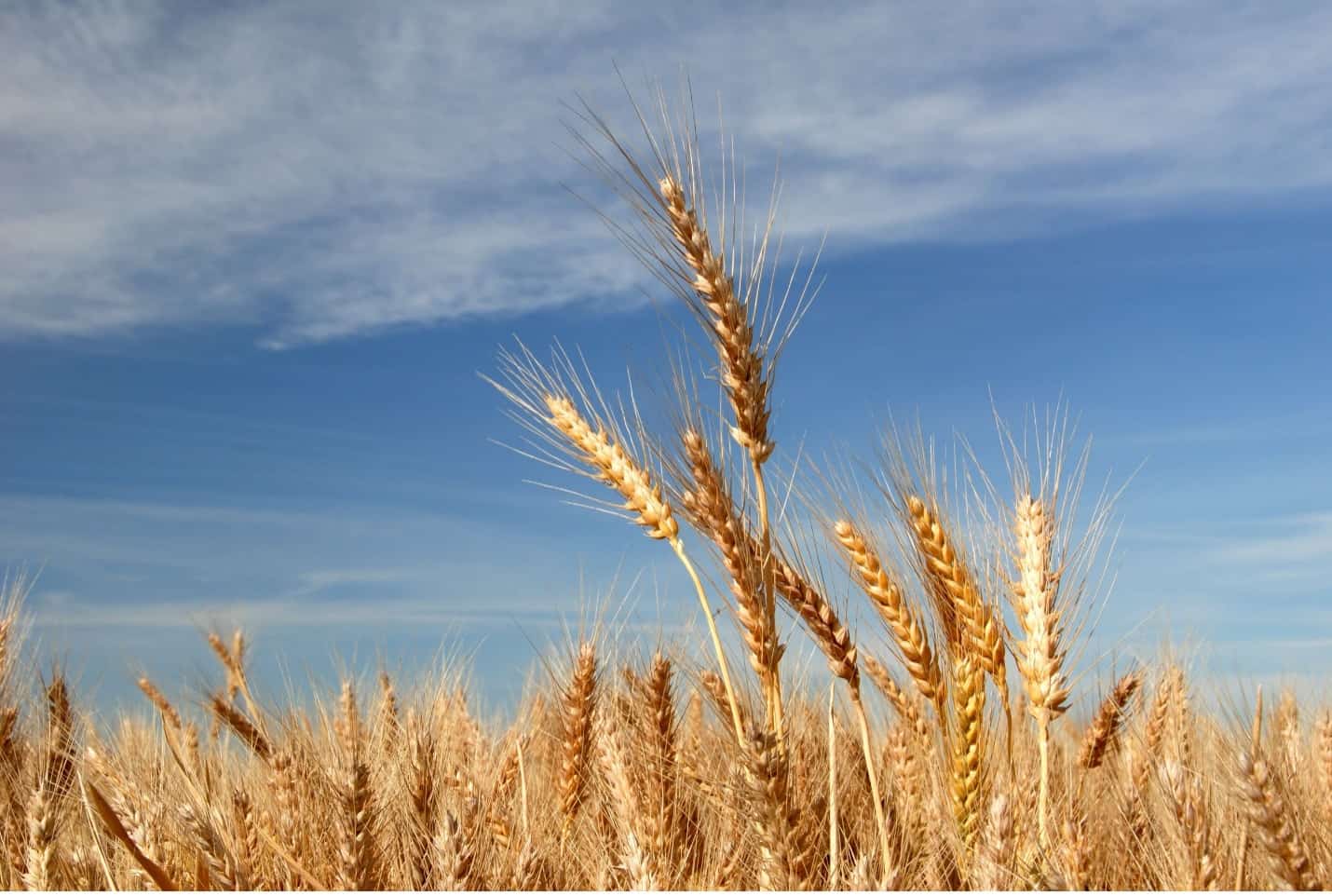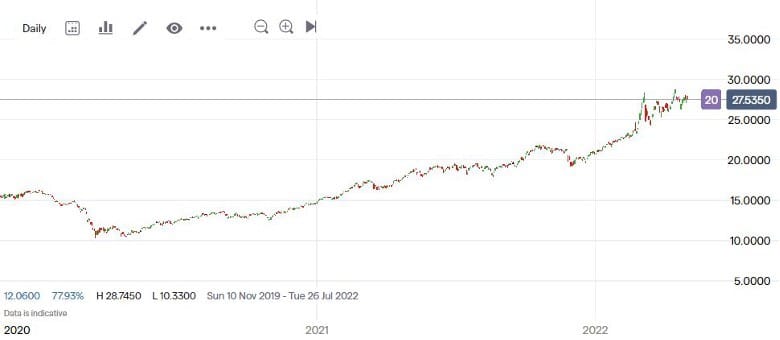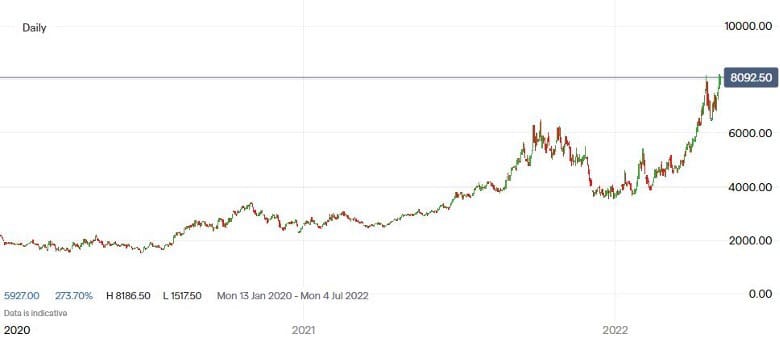Commodities are the backbone of the world economy. Together with labour, they are primary ingredients for all finished or intermediate goods and thus help drive the Gross Domestic Product (GDP) growth. They are often split into two main categories: hard and soft commodities. Hard commodities are resources that need to be extracted or mined. Examples are crude oil, gold, and natural gas.

Soft commodities, on the other hand, are generally agricultural products such as crops, vegetables, and livestock. Both hard and soft commodities are often split into subcategories. For instance, hard commodities are divided into energies and metals. Energies are then divided into oil/natural gas, refined products, and emissions, whereas metals are divided into industrial metals and precious metals. Agricultural (soft) commodities are split into three subcategories: grains, livestock, and other softs.
While it is rather hard to quantify the size of the commodity market, there is no doubt about the significance it has on our daily lives. For instance, a war breaking out between two major commodity exporters can send shock waves through the markets and drive prices up significantly. It can be seen on commodity indexes, such as the Invesco DB Commodity Index Tracking Fund, which allows investors to take advantage of the movements in commodity prices by tracking the futures markets. The index has had quite an impressive run, rising by over 250% since its 2020 March lows:

Source: IG
In this article, we are going to take a look at the top 10 most traded commodities in the world. We will explore the factors that make each so widespread and important, what drives their prices, and some interesting particularities. To make up this list, we will use the previously mentioned Invesco DB Commodity Index Tracking Fund and use the weights of its portfolio composition.
Top 10 Most Traded Commodities in the World
Crude Oil
Crude oil is the driving force of a modern economy. It is arguably the most talked about and most traded commodity in the world. It is primarily used for transportation (66% of end-use) and industrial (28% of end-use). The modern world is hard to imagine without planes, cars, and other vehicles, and crude oil currently powers most means of travel. It is refined into the sought-after commodities of petrol and diesel. Heating oil for homes and businesses is another by-product of crude oil.
There are two heavily traded benchmarks for crude oil: Brent and WTI. Brent crude is the benchmark used for the wider light oil market – crude oil that originates from Europe, Africa, and the Middle East, whereas WTI is the benchmark used for the US light oil market.
In general, Brent and WTI prices rise and fall together with the typical economic cycle – as GDP growth accelerates, so does the demand for crude oil and its products. However, prices can quickly spike if there is insufficient supply to meet market demand. Supply is subject to control by the international oil organisation OPEC. The member countries often meet to decide on the collective and individual crude oil output quotas, something oil traders follow closely.
Aluminium
Aluminium does not exist naturally – it is a product of bauxite ore which is turned into alumina and then into aluminium. Aluminium is a metal typically used for industrial purposes. Most common uses include construction (25%), automotive and transportation industries (23%), foil and packaging (17%), electrical engineering and electronics (12%), and machinery and equipment (11%).
China is the world’s largest producer of alumina and aluminium, accounting for over half of the worldwide production of the materials. However, it only accounts for 16% of the world’s bauxite ore production, with Australia (30%) and Guinea (22%) taking the top spots. Therefore, China tends to import a lot of bauxite ore from those countries to make alumina and aluminium. Since electricity is heavily involved in the production of this material, aluminium prices tend to be somewhat sensitive to electricity prices and environmental regulations in China. In addition, due to the wide array of industries that use aluminium, demand and prices heavily depend on the growth of GDP and demand for this metal in key areas such as the US, China, and Europe.
Copper
Copper is an industrial metal used in a wide array of industries, including equipment manufacturing (32%), building construction (28%), infrastructure (16%), transportation (12%), and industrial production (12%). It is increasingly important and widespread in electronics due to its excellent conduction of both heat and electricity. Analysts forecast that global copper demand will skyrocket due to the transition to green energy because the metal is used in expanding electricity networks and clean energy technologies such as electric vehicles.
Copper demand, like aluminium, heavily depends on the growth of worldwide GDP and the need for this metal in crucial areas such as the US, China, and Europe. Chile (29%) and Peru (11%) are the world’s largest producers of copper. They also hold the world’s largest reserves of copper, and therefore, prices tend to be sensitive to any trade disputes involving the two countries.
Natural Gas
Natural gas is one of the world’s most essential commodities due to its widespread use in electricity generation and heating. It is typically a cyclical commodity, with prices spiking in winter and summer when heating and cooling are most needed. Natural gas traders can easily be wiped out if they end up on the wrong side of the trade due to poor risk management. You can learn more on our site about managing risk during periods of extreme volatility.
The US and Russia are the world’s largest producers of natural gas.

Source: IG
Gold
Gold is by far the most widely traded precious metal. Although it has industrial and electrical applications due to its composition and qualities, it is primarily considered a form of investment or even a form of currency due to its durability, limited supply, and aesthetical appearance.
China, Russia, and Australia are the world’s largest gold producers, accounting for just over 10% of global production. However, it is usually speculation in the financial markets that drive the price of this commodity. Gold is a part of the so-called safe-haven trade, which happens when risk increases in the markets. As a rule of thumb, gold prices, at least temporarily, shoot up when there is a financial or geopolitical crisis. In addition, gold is regarded as a protection against inflation.
Corn
Corn, also known as maize, is a native Central American cereal grain. It is widely used as a food source for humans and animals and is an ingredient in fuel production. The United States and China are by far the largest producers of corn. Since it’s an agricultural commodity, its prices heavily depend on the success of the harvest. Hence, sharp changes in climate and anomalies such as droughts can heavily influence the cost of the commodity. In addition, corn is used to produce ethanol, a fuel often regarded as a substitute for crude oil. Due to this, when crude oil prices rise, biofuels become more appealing, thus increasing the demand for corn.
Wheat
Wheat is a grass cultivated for its seed, a global staple food. Wheat is typically milled into flour which is then used to make a wide range of foods, including bread, confectionery, snacks, pastries, biscuits, cakes, and many more. China, India, and Russia are the world’s largest producers accounting for more than 40% of global production. Just as with corn, wheat prices depend heavily on changes in climate and anomalies such as droughts which can heavily affect the commodity’s price. However, as we have witnessed, a military conflict involving large producers and exporters can significantly influence wheat prices. Russia and Ukraine recently accounted for 14% of global wheat production and 29% of all wheat exports. Wheat prices have soared as a reaction to the conflict between the two countries.
Soybeans
Soybeans are a high-protein plant food native to East Asia that is relatively cheap to produce. They are used to make a large variety of agricultural products and food, such as soybean meals (used to feed animals), soybean oil, and dairy substitutes such as soy milk. They are also used to produce biodiesel.
Soybean prices are affected by the demand for its products and weather conditions. Additionally, since the US is the second-largest producer of soybeans in the world, just behind Brazil, the US dollar is an important factor in determining soybean prices. As the US dollar falls, soybean prices tend to rise, and vice versa.
Zinc
Zinc is regarded as the 23rd most abundant element in the world. The primary use of zinc is in the galvanising process, which protects iron and steel from rust. Galvanised iron or steel is used in construction (balconies, stairs, pipes, etc.), cars, and electronics. China (35%), Australia (11%), and Peru (10%) are the leading producers of zinc globally, while Australia holds more than a quarter of the world’s zinc reserves.
Prices of zinc generally follow global demand due to its many applications. Also, since coal, electricity, and crude oil are involved heavily in the production and refining process of zinc, the prices of these inputs and the environmental regulation in China (the world’s largest producer) are key factors affecting zinc prices.
Sugar
Sugar is a soft commodity obtained from the processing of sugar beets or sugar cane. It is widely used in the food industry as a sweetener, preservative, flavouring and colouring agent, texture modifier, and more. Additionally, similar to corn, it is increasingly being used to produce ethanol.
India and Brazil are key producers of sugar, making up more than 35% of the world’s supply. The price of sugar is affected by climate and the prices of substitutes for sugar products. Due to the link between sugar and fuels, crude oil is a crucial factor affecting the price of sugar. As crude oil prices rise, ethanol becomes more appealing, which increases the demand for sugar.
Conclusion
In this article, we have taken a look at the ten most traded commodities. As the world population grows, there will be more mouths to feed and more needs to meet. And, most certainly, commodities will play a vital role in helping meet those needs. As commodity prices are on the rise, this just might be the next commodity supercycle you can take advantage of.